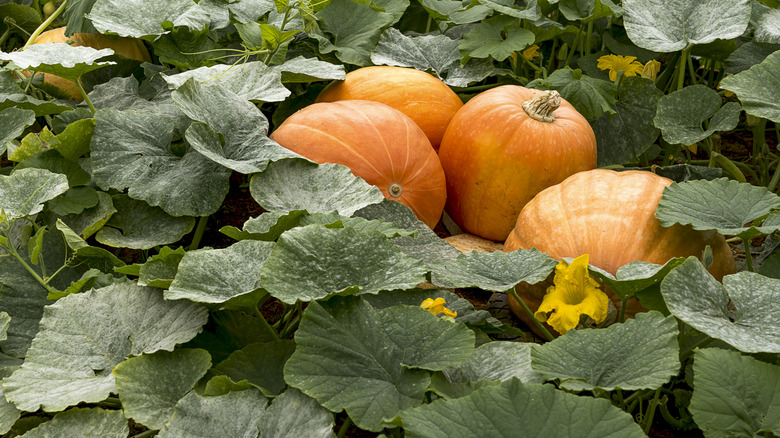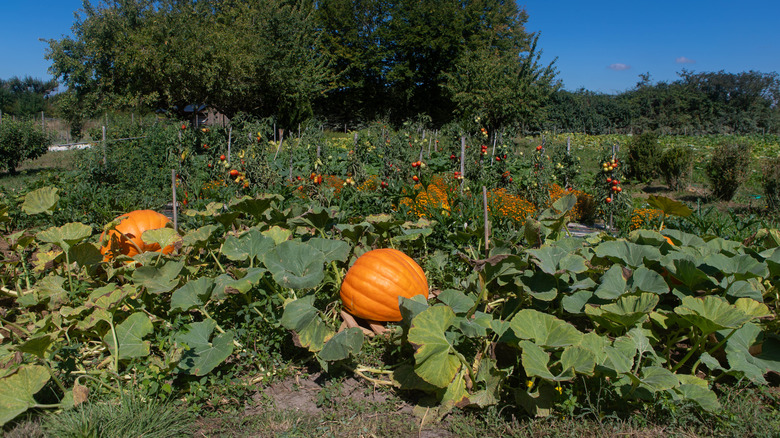June Is The Perfect Time For Illinois Gardeners To Plant Pumpkins. Here's Why
If you'd love to have some homegrown pumpkins to show off this fall, but worry that you missed your window, don't panic. In Illinois, June is actually the best time of the year to plant pumpkins. Get your pumpkins in the ground now, and you'll have plenty to carve by Halloween or turn into homemade pies by Thanksgiving.
As you can probably guess by their considerable size, pumpkins take a while to mature. They grow in the warm summer months for up to 110 days before being harvested before the first serious cold snaps and frosts. As a result, they need to be planted in Illinois's zones 5 and 6 three to four months before temperatures drop. In the north of the state (zone 5), where temperatures drop early in the fall and there's less of a risk of May frost, planting earlier is wise. In the southern parts of the state, plants can go into the ground as late as July.
Across the state, though, June is a safe window that guarantees a successful harvest in between colder Illinois months. Unless you live in the south of the state, try to get it done in the first half of the month to be safe. This helps guarantee the fruits have time to mature enough before harvest, even if winter temperatures arrive early this year.
How to plant pumpkins in June in Illinois
There are two ways to plant pumpkins: either by planting seeds directly into the soil outdoors, or by growing them in nurseries first before transplanting small plug plants outside. If you haven't been growing seeds indoors between April and May, June is too late to start (it's time for baby pumpkins to be outdoors). Don't worry, planting seeds outside is a completely fine way to grow pumpkins. Nurseries are not necessary unless you're trying to grow long-season varieties. Simply buy some pumpkin seeds from your local garden center that are well-suited for outdoor planting in your climate.
To plant pumpkins outdoors, it's best to use hills (small mounds of soil). Create these hills in a sunny spot of your garden, about five feet from each other, and plant seeds an inch into the soil. If more than one seedling appears in a hill, you can remove the weaker ones to let just one vine thrive without any competition (for semi-bush varieties, you can keep two).
Once planted, your pumpkins should be fairly easy to care for. Throughout the summer, make sure to keep them free of weeds. Some garden pests might also stop your pumpkins from growing, so keep an eye on them and use some deterrents if needed. For an all-natural alternative to pest control and fertilizer, consider companion plants that will be your pumpkin's best friend, like radishes or pole beans. Finally, pumpkin plants need about one inch of water per week, so make sure to water your vines during dry spells.

